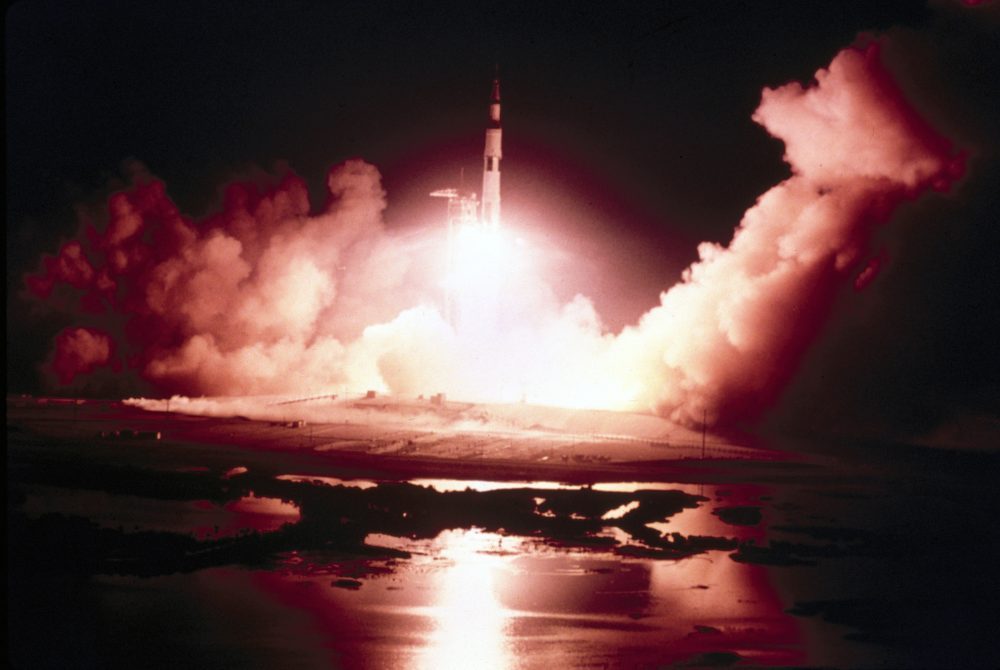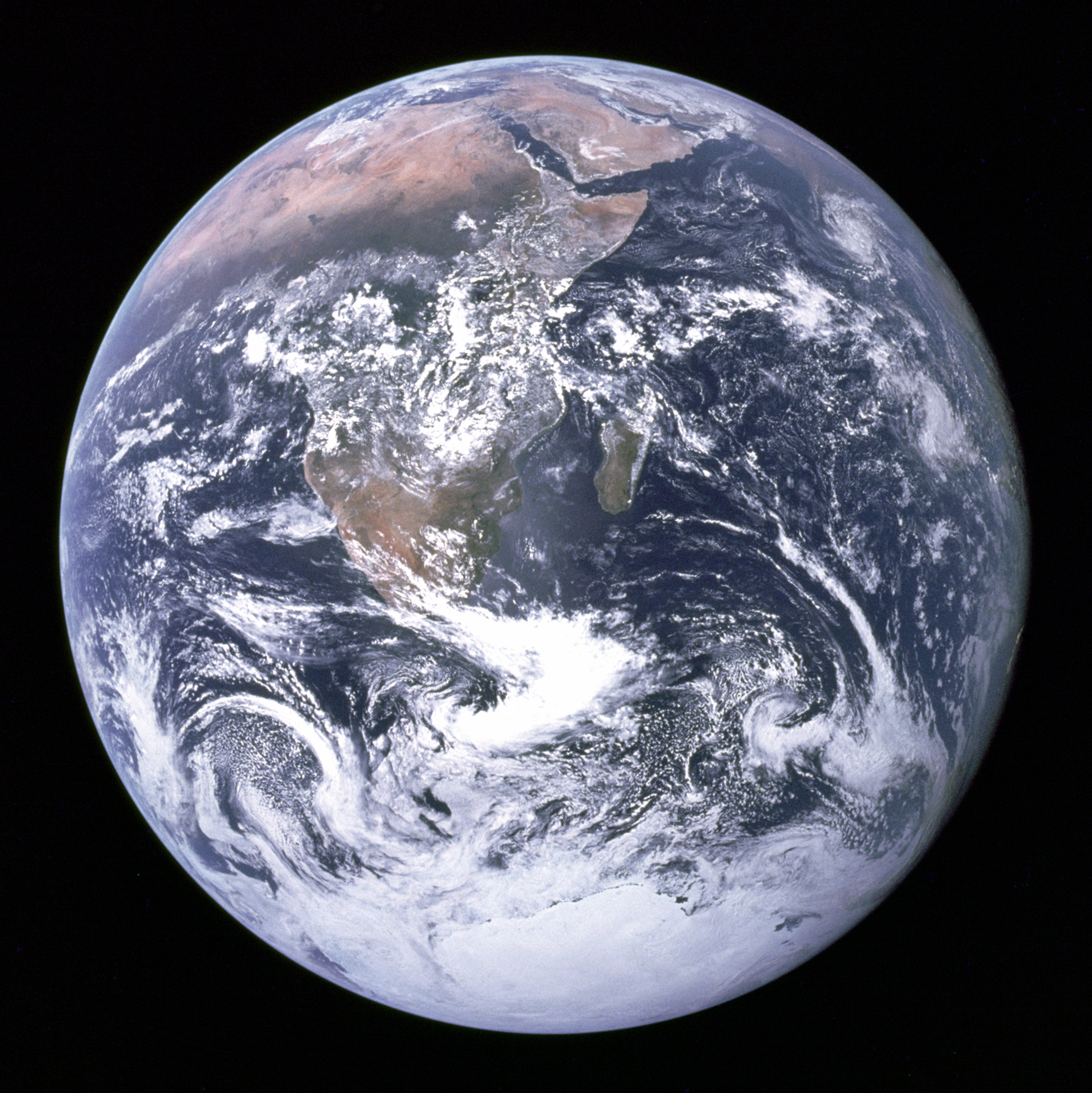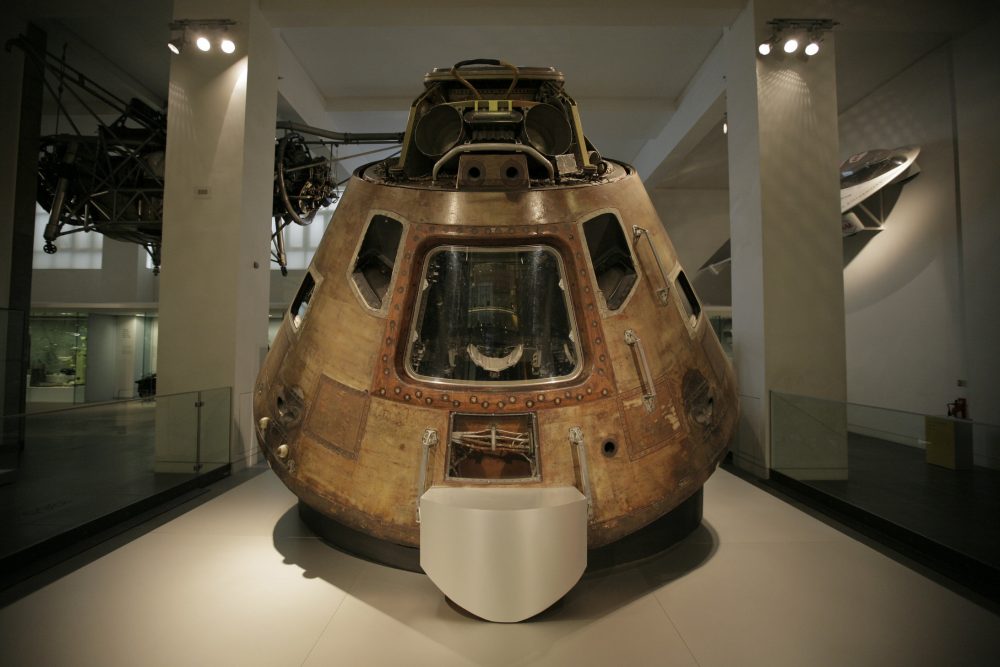Apollo 17 and three astronauts, Commander Eugene Cernan, Command Module Pilot Ronald Evans, and Lunar Module Pilot Harrison Schmitt, blasted into orbit on 7 December 1972.
The three-day trip was to be the final mission of the US Apollo space programme, and over forty years later, humans are still to leave low earth orbit to return to the Moon.

The Apollo 17 crew carried out many scientific experiments and broke several records – the longest time in lunar orbit, longest extravehicular activities on the lunar surface and the largest lunar sample return – as well as producing one of the most iconic and widely distributed photographic images in history: the Blue Marble.

Five hours into the Apollo 17 mission, the crew looked back at the Earth, some 45,000 km away, to capture this famous image.
The photograph is one of only a few to show a fully illuminated Earth – the Sun was behind the astronauts when the image was captured – and to the crew, our planet appeared like a glass marble, hence the name.

Aspiring astronauts of all ages have plenty of opportunities to see iconic space objects when visiting the museum: A sample of Moon rock, brought back with Apollo 15 is on display in our Exploring Space gallery, with the Apollo 10 Command module – complete with re-entry scorch marks – on display in the Making the Modern World gallery.

Families can celebrate humans walking on the Moon with the Legend of Apollo experience. Feel the impact of a Saturn V rocket launch and join the ground-breaking Apollo mission crew through NASA film archives and 3D computer animation. Legend of Apollo is suitable for ages 4+ and can be booked here.
3 comments on “Apollo 17 – One Last View Of The Blue Marble”
Comments are closed.
They were great days and show what can be done with the right attitude. The computing is laughable against today’s standards but it did the job. That and having the crew made of the right stuff.
Hello Will,
This video about that very thing might be of interest.
https://vimeo.com/55073825
Thanks Marble, that video is great. We’ll be sure to share it with our followers on Twitter.